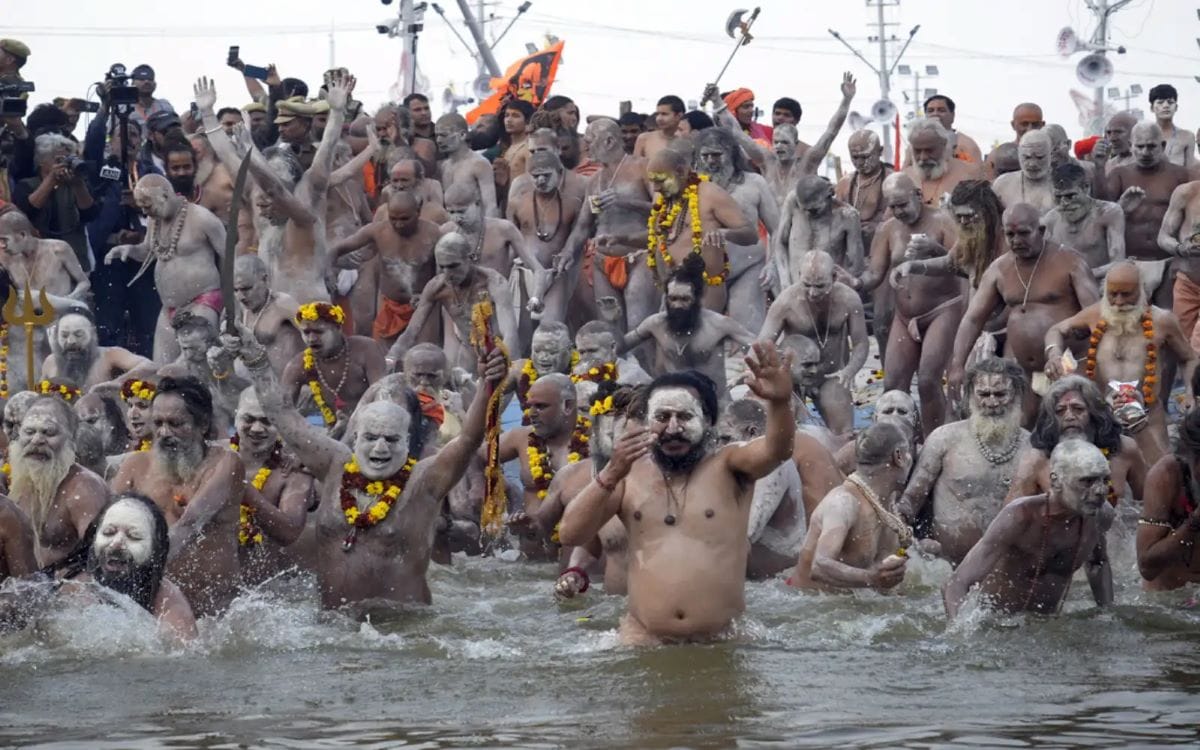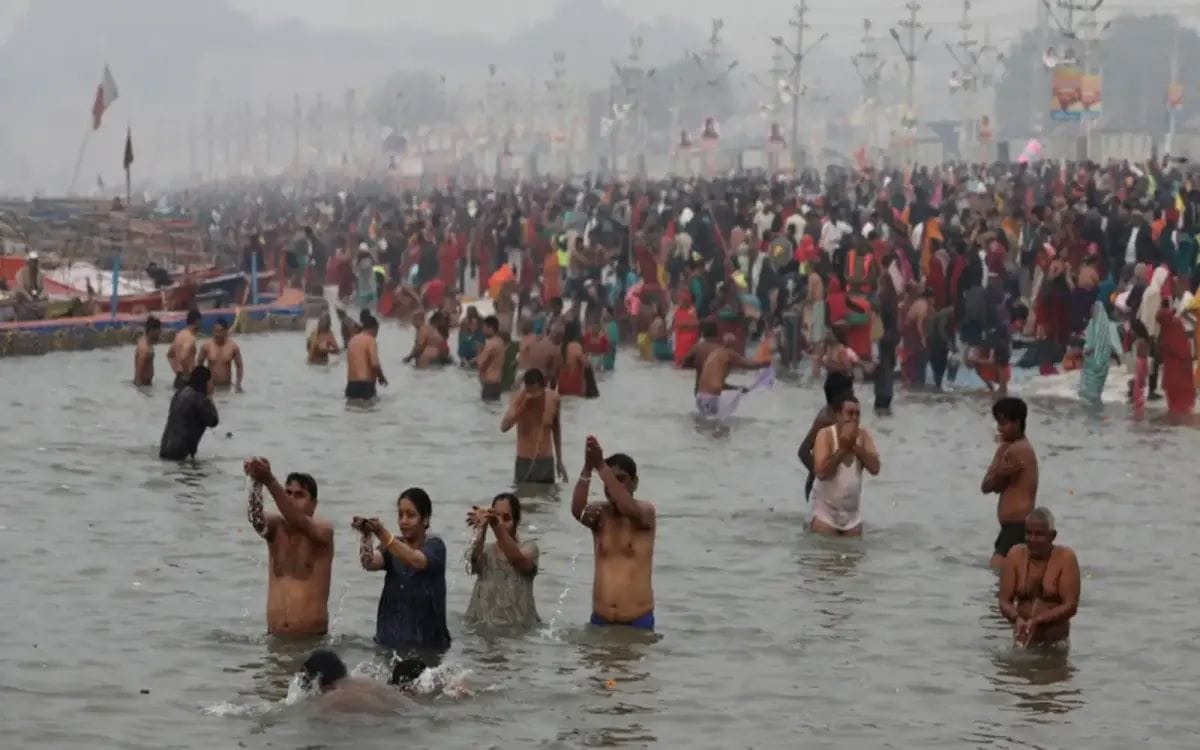The Maha Kumbh Mela 2025 is the world’s largest spiritual gathering, where millions of devotees come together at Prayagraj to take a holy dip in the Triveni Sangam—believed to cleanse sins and grant spiritual liberation. Rooted in the legend of Samudra Manthan, this sacred event symbolizes the eternal quest for purity and divine blessings.
More than just a pilgrimage, the Kumbh Mela embodies the universal longing for spiritual renewal, much like other faiths, including Christianity, which emphasize grace and redemption. As this grand event unfolds, it offers a rare opportunity for deep reflection, devotion, and connection with the divine.

Introduction
The Maha Kumbh Mela 2025 is one of India’s most anticipated religious events, drawing millions of devotees, saints, and spiritual seekers worldwide. It is considered the largest congregation of faith, where pilgrims gather to bathe in sacred rivers, perform religious rituals, and seek spiritual enlightenment.
The festival is deeply rooted in Hindu mythology, ancient scriptures, and spiritual traditions, symbolizing the eternal quest for purity and salvation. Interestingly, this belief resonates across faiths, including Christianity, emphasizing sin, redemption, and divine forgiveness.
The Bible, in Romans 3:23, states that “all have sinned and fall short of the glory of God.” Similarly, Hindu philosophy acknowledges the impact of past karma and the need for spiritual purification to attain moksha (liberation). The Kumbh Mela serves as a divine opportunity for people to cleanse their sins, just as Christianity speaks about spiritual cleansing through faith and divine grace.
This blog delves into the significance, mythology, rituals, and deep spiritual connections associated with the Maha Kumbh Mela 2025, offering insights into why this festival remains one of the most sacred events in human history.
What is the Meaning of Kumbh and What Does It Stand For?
The word “Kumbh” in Sanskrit translates to “pot or pitcher.” In the context of Hindu mythology, it refers to the divine pot of nectar (Amrit) that grants immortality. The festival symbolizes the eternal struggle between good and evil, as depicted in the Samudra Manthan (Churning of the Ocean). The Kumbh Mela represents an opportunity for devotees to attain spiritual rejuvenation and divine blessings through ritualistic bathing in sacred rivers.
The act of purification in Kumbh Mela finds parallels in the Christian concept of baptism, where water symbolizes the washing away of sins and the renewal of faith. Just as Hindus believe that bathing in the holy rivers during Kumbh purifies them, Christians believe in the power of baptism for spiritual cleansing (Acts 22:16 – “Be baptized and wash away your sins, calling on His name.”).
The Ancient Mythological Story and the Belief Behind Kumbh Mela
The Kumbh Mela has its roots in the Samudra Manthan, an event described in Hindu scriptures like the Bhagavata Purana, Vishnu Purana, and Mahabharata. According to the legend:
- The Devas (gods) and Asuras (demons) churned the ocean to obtain Amrit (nectar of immortality).
- As the nectar emerged, a battle ensued between the Devas and Asuras over its possession.
- During the struggle, Lord Vishnu, in his Mohini avatar, took the pot of nectar and carried it across the skies.
- While flying, four drops of nectar fell on four locations: Prayagraj, Haridwar, Ujjain, and Nashik.
- These places became sacred, and it is believed that bathing in their rivers during Kumbh Mela washes away sins and grants spiritual liberation.
The concept of divine cleansing in Hinduism is similar to the Christian belief that all humans are sinners and require divine intervention for redemption. In Isaiah 1:18, God invites people, saying, “Though your sins are like scarlet, they shall be as white as snow.” Both faiths emphasize spiritual purification as a means to attain closeness to God.
Types of Kumbh Melas and Their Frequency
There are four types of Kumbh Melas, each occurring at specific intervals:
- Maha Kumbh Mela – Held once every 12 years at Prayagraj (Allahabad), it is the largest and most significant of all Kumbhs.
- Purna Kumbh Mela – Occurs every 12 years, rotating between Prayagraj, Haridwar, Ujjain, and Nashik.
- Ardh Kumbh Mela – Held every 6 years in Prayagraj and Haridwar.
- Magh Mela (Mini Kumbh Mela) – Organized annually in Prayagraj, considered a smaller version of the Kumbh Mela.
Kumbh Mela Locations
The four sacred sites where Kumbh Mela is held are:
- Prayagraj (Allahabad, Uttar Pradesh) – Confluence of the Ganga, Yamuna, and mythical Saraswati River (Triveni Sangam).
- Haridwar (Uttarakhand) – Where the Ganga enters the plains from the Himalayas.
- Ujjain (Madhya Pradesh) – Along the Shipra River, home to the revered Mahakaleshwar Temple.
- Nashik (Maharashtra) – Located on the banks of the Godavari River, linked to the Ramayana.
Rituals Performed During Kumbh Mela
- Shahi Snan (Royal Bath) – The most significant ritual where saints, sadhus, and pilgrims bathe in the sacred river.
- Kalpavas – A period of meditation, fasting, and spiritual discipline.
- Ganga Aarti – A mesmerizing ritual where priests perform synchronized worship of the river.
- Darshan of Sadhus – Meeting spiritual leaders and saints to gain divine blessings.
- Puja and Yagna – Special fire rituals and prayers for prosperity and well-being.
- Spiritual Discourses – Religious scholars deliver sermons on Hindu philosophy.
Why Would Any Hindu Join the Kumbh Mela?
The Kumbh Mela offers an unparalleled spiritual experience. Devotees attend for:
- Cleansing of past sins
- Seeking divine blessings
- Spiritual awakening and self-discipline
- Participating in a collective expression of faith
This universal desire for redemption is not unique to Hinduism. Christianity also emphasizes grace, forgiveness, and divine mercy. Just as Kumbh devotees bathe in holy rivers, Christians believe in spiritual cleansing through Jesus Christ (1 John 1:9 – “If we confess our sins, He is faithful and just to forgive us.”).
Looking for more spiritual experiences? Read 2025 Prayag Maha Kumbh Mela
Don’t miss our post on The Truth About Christmas
Conclusion
The Maha Kumbh Mela 2025 is not just a religious festival; it is a spiritual phenomenon that transcends cultures and faiths. It unites millions in devotion, offering a profound sense of purification, enlightenment, and divine connection.
Whether from the Hindu perspective of karma and moksha or the Christian belief in redemption and grace, the essence remains the same: humans seek spiritual renewal and divine blessings. The Kumbh Mela stands as a testament to faith’s power in guiding humanity toward a higher purpose.


Leave a Reply